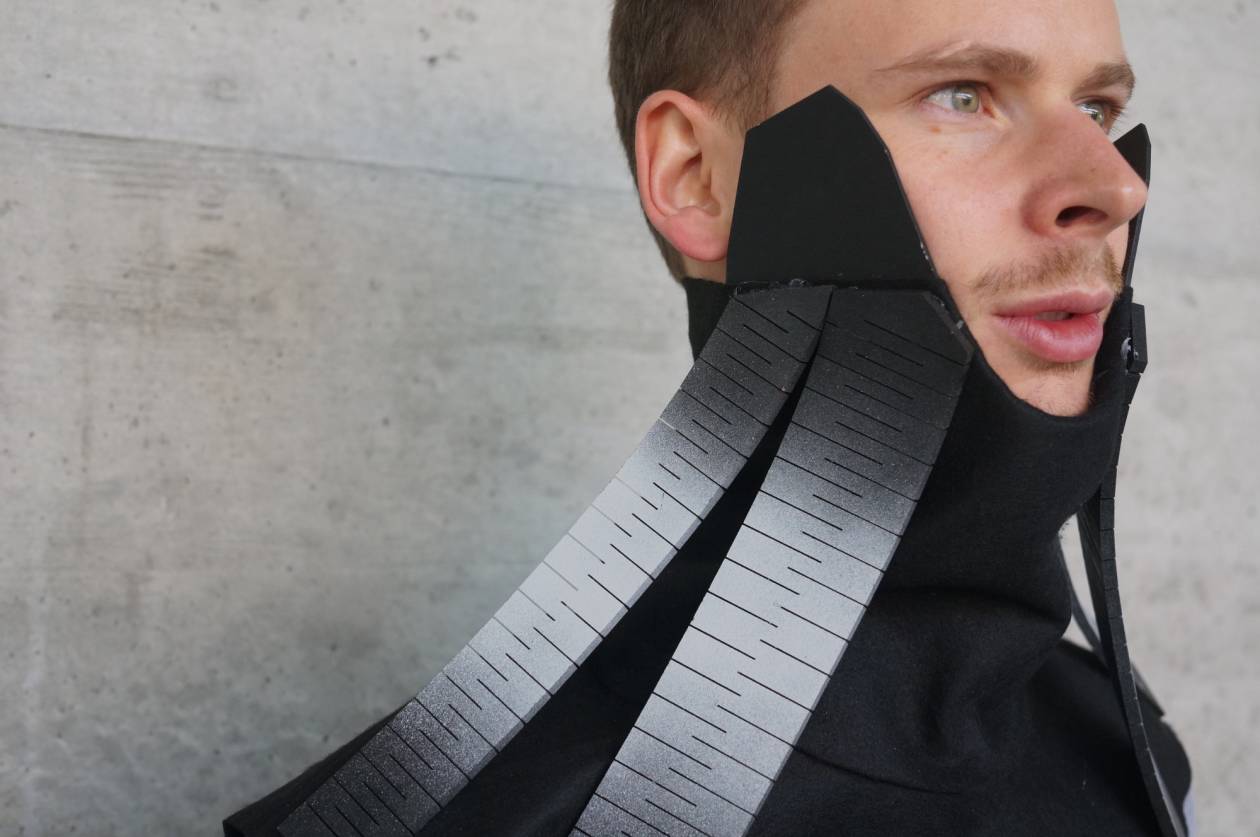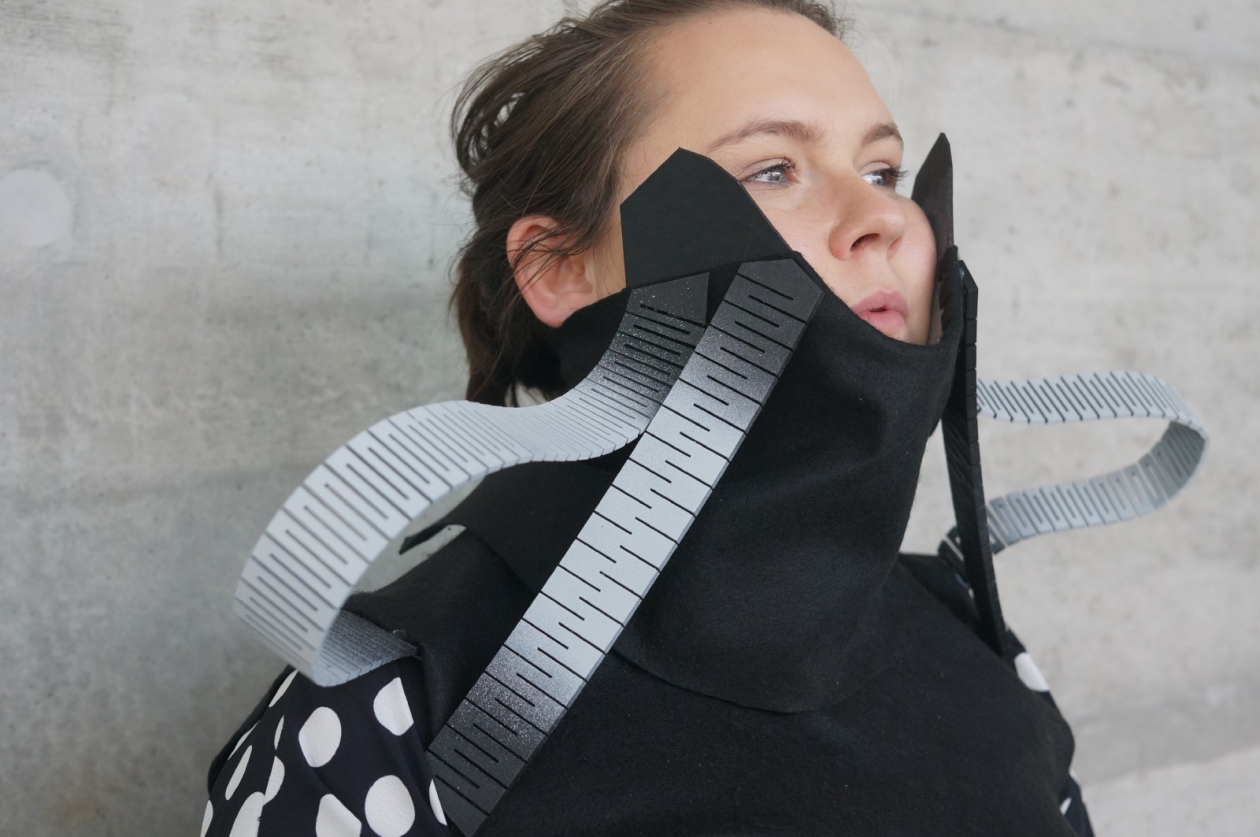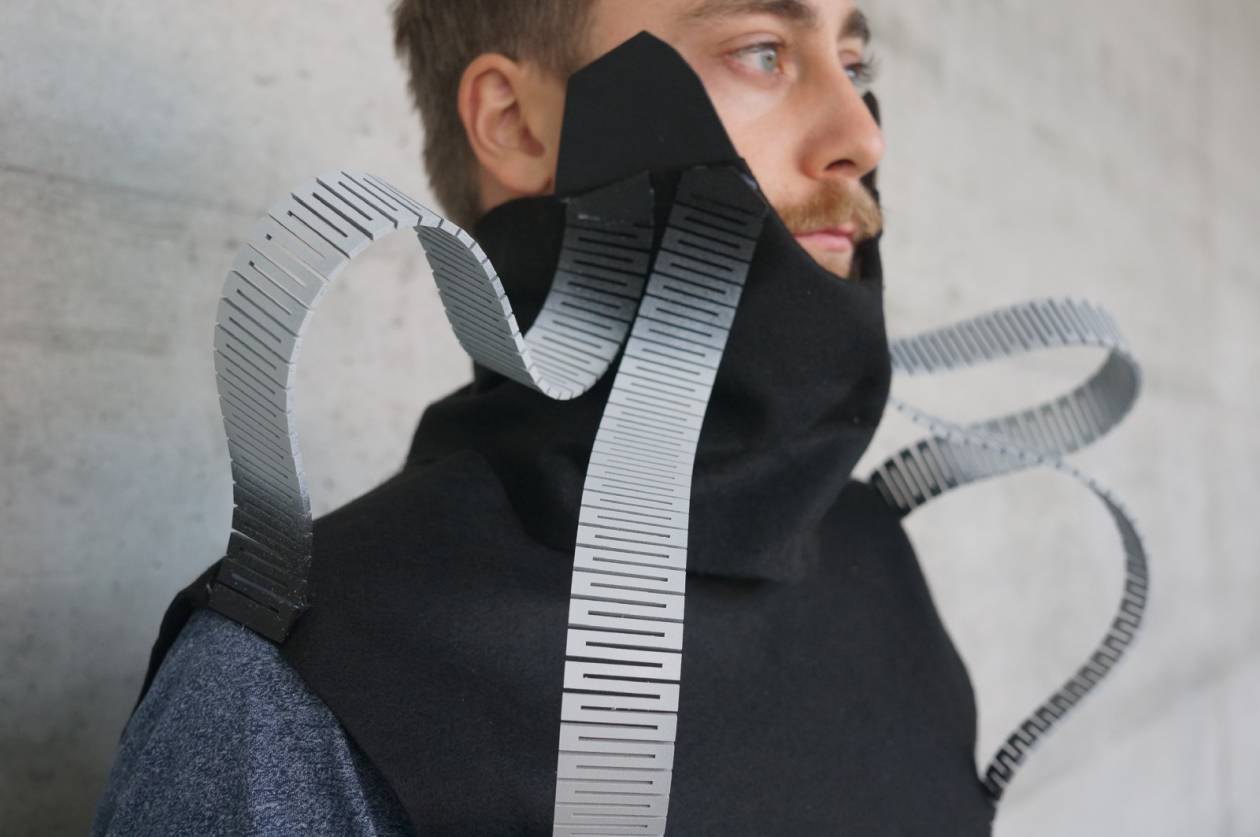A hard day's night
It all came down to this week, or more specifically, Tuesday and Wednesday. We used the previously constructed textile base to optimize the effect of the structures as good as we could. We had cut out the part that covered the chin after we glued an additional piece of cardboard onto the sides, where the cheeks press upon.
First, we used common wooden sticks to determine where we needed to position the flexible parts in order to find out where they were most effective. The cardboard piece helped us to apply the force directly onto the cheek, preventing the head from rotating, while the lower end of the sticks was fixed on the textile surface on the upper chest.
We then defined the exact look of the three wearables we wanted to create for the presentation, to show different stages. While Adri and I went to the textile workshop to prepare three new harnesses, Manu drew the structures in illustrator and prepared the laser cutter.
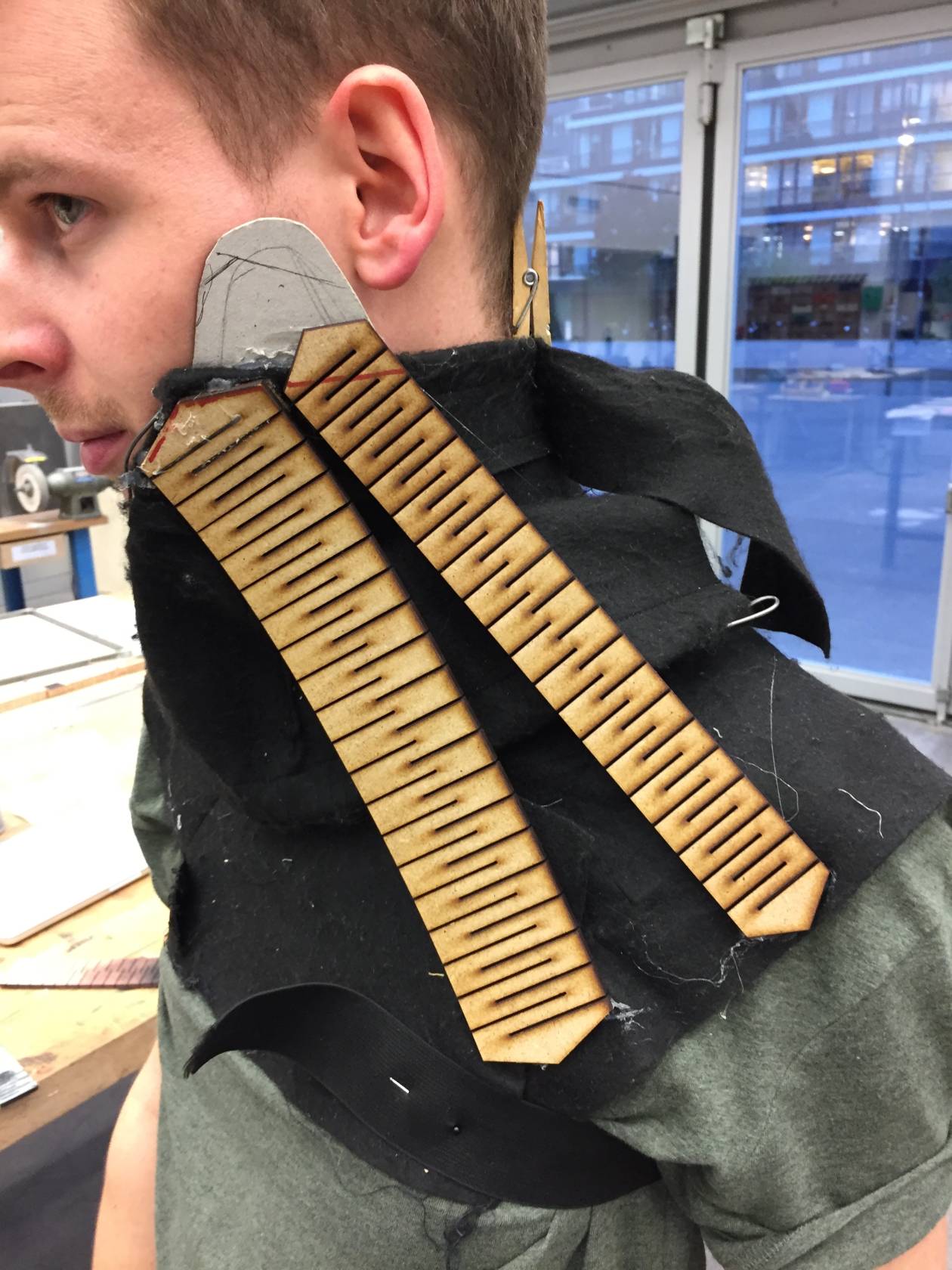
Presentation
To our final presentation, we chose 3 protagonists who represent the different statuses in the social media-driven society and demonstrate how the wearable reacts on the change of their popularity index: Manuel played the waiter, the most limited person; the novice was Adri, she wore the wearable that had a slight limitation but showed wealth; and the social-media guru, played by me.
The scene then started as Adri visited the cafe, in which Manu worked. A few seconds later I joined and took a seat next to Adri. She then asked for hints on how to gain a better score in the system, in which I was very successful. Within our little improv theatre, we added fragments and impressions on how society would work in this dystopian scenario and what the issue of upcoming Social Credit System are.
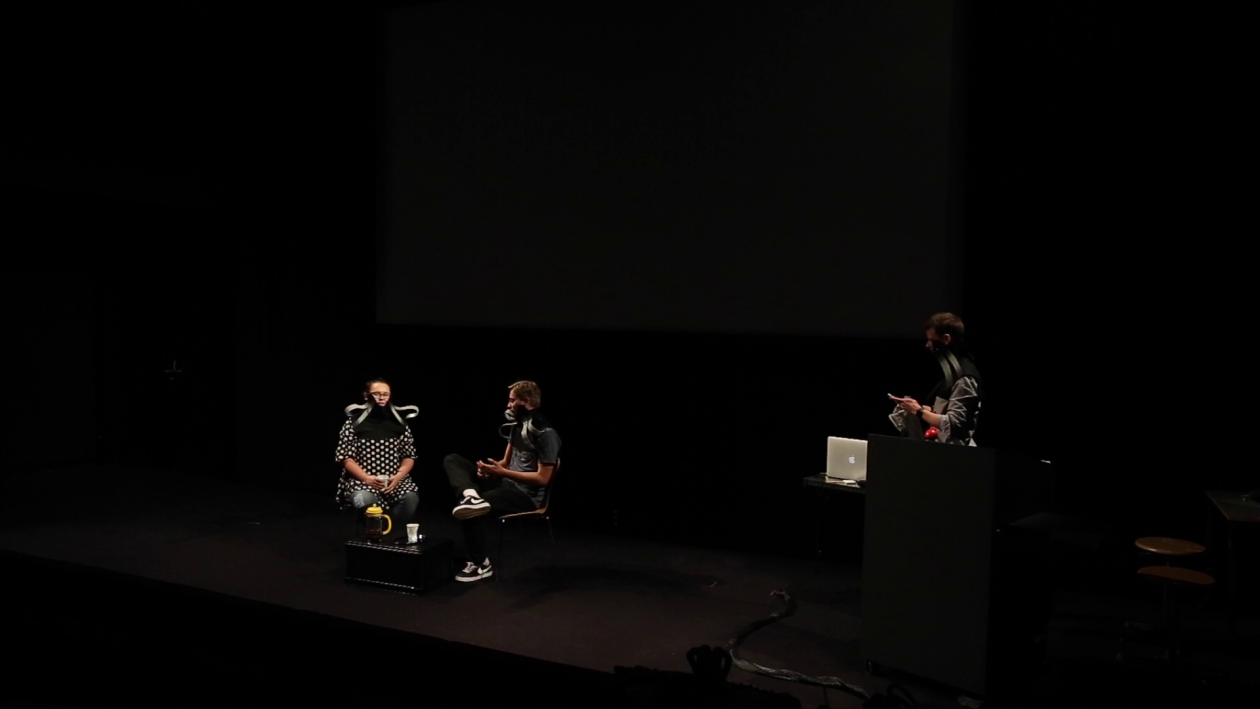
Final Form
As a foundation, we created a textile part that fitted onto the shoulders. A hole left space for the head and two flexible stripes under the armpits prevented the whole construction from slipping. The neck part consisted of a hidden cardboard which would sit on the cheeks and another piece of fabric that was tied around the neck.
This construct served as our foundation for the MDF structures. We used four stripes of different flexibility. The two in the front were to prevent the rotation of the head, while the rear stripes principally served the purpose of a status symbol.
Looking back at the wearable, we were quite satisfied with the aesthetics and the function of it. The gradient gave it a futuristic touch while the black emphasized the dystopian scenario.
